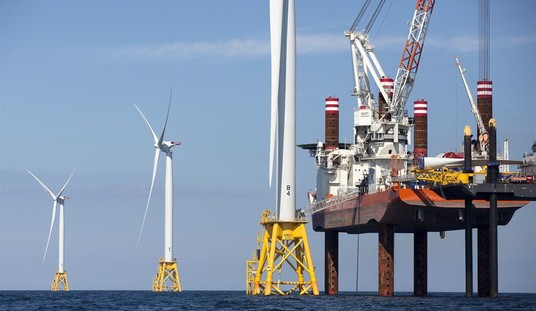As the President heads down to the Texas border this morning, there’s no sign of any sort of deal involving another $5.7B to build hundreds of additional miles of wall, fence, steel slats or whatever the description of the day happens to be. It’s easy to forget, however, that Donald Trump previously secured some funding for 33 miles of “barrier” in Texas last March and that work is supposed to be kicking into gear. Simply having the money, however, doesn’t mean the project is shovel ready. First, the government must secure the land to put the wall on.
That’s not a given in many cases. The Associated Press has an interview with one landowner with property along the Rio Grande who has no intention of allowing construction on her property. And she claims that it’s not a question of writing him a big enough check.
As President Donald Trump travels to the border in Texas to make the case for his $5.7 billion wall, landowner Eloisa Cavazos says she knows firsthand how the project will play out if the White House gets its way.
The federal government has started surveying land along the border in Texas and announced plans to start construction next month. Rather than surrender their land, some property owners are digging in, vowing to reject buyout offers and preparing to fight the administration in court.
“You could give me a trillion dollars and I wouldn’t take it,” said Cavazos, whose land sits along the Rio Grande, the river separating the U.S. and Mexico in Texas. “It’s not about money.”
Ms. Cavazos is only one of many thorns in Trump’s side when it comes to building the border wall. So what should the government do about these defiant landowners? Negotiations leading to a resolution which satisfies both parties would be the ideal situation, but some, like Cavazos, who say that even “a trillion dollars” wouldn’t do the trick aren’t going to allow that to be an option.
The more crude, sledgehammer approach would be to then resort to eminent domain. That should clearly be a legally viable option, despite what some of the talking heads on CNN are saying this week. Under proper use of eminent domain, the land in question must be taken for “public use.” (Of course, the execrable Kelo decision states that land can be taken for “public benefit” which makes it all the easier, but vastly hypocritical for conservatives.) A water or sewage treatment plant is “used” by the public even if they don’t physically go and hang out at the facility because such projects serve the entire community. In the same fashion, a wall that protects the citizens from foreign invaders is “used” by everyone.
Still, to be true to conservative principles, eminent domain should be avoided wherever possible, respecting the rights of landowners to forge their own future. So if we can’t negotiate with the landowners and don’t wish to forcibly seize their property, what option is left? I have one suggestion, though some will find it distasteful.
First, let’s answer the question of specifically where a border wall has to be placed. We don’t put it exactly on the border. In many cases that would require building it in the middle of a river. You can’t even put it directly on the riverbank because the land is generally too weak and muddy to support such a structure. With that as a starting point, there really isn’t any hard and fast rule as to how far back from the border the barrier must be.
Keeping that premise in mind, if Ms. Cavazos doesn’t want to negotiate a deal to have the wall on her property, let’s pull the line back until we reach a piece of land that can be made available and build it there. In other words, all of the property owners along the border who don’t wish to support protecting our border can be put on the other side of the wall. This doesn’t need to be a cruel or inhumane solution. We’ll be sure to provide a port of entry every so often along the fence and have roads running along the outside so property owners can reach them. Assuming the landowners are all legal U.S. citizens, they will have no trouble getting through customs at the port of entry for any business they need to conduct in the interior of the country. (It just might take a bit longer if there are a lot of people waiting to get through.)
Problem solved. This plan carries an added bonus. The more border that’s secured with a proper barrier, the fewer customs and immigration enforcement agents will be needed to patrol it. That will free them up to handle the traffic of legal travelers needing to pass through the ports of entry. Of course, as soon as the landowners learn that they’re about to find themselves on the wrong side of the wall, they may reconsider that whole negotiating thing.








Join the conversation as a VIP Member